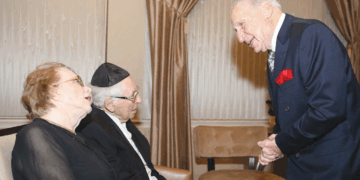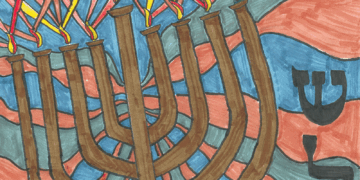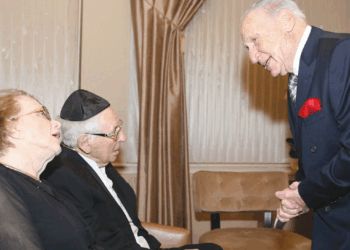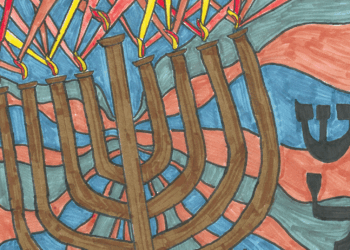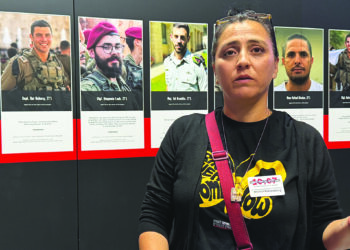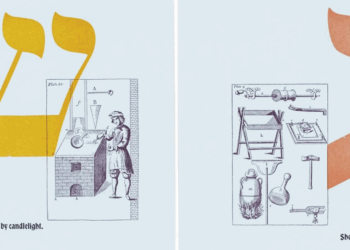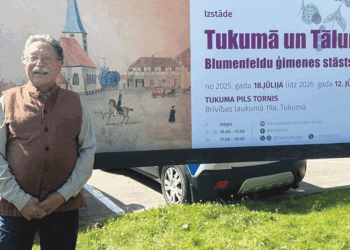A $21.1 million building renovation of the synagogue and education building is the biggest item of the L’Dor Vador Campaign
By MORDECAI SPECKTOR
Following Rosh Hashana services at Temple Israel, each family was given a tiny bottle of earth taken from the site of the synagogue’s education building.
In a recent letter to congregants, Rabbi Marcia Zimmerman wrote: “The principle of mass conservation asserts that matter is neither created nor destroyed. This concept is similar to the Jewish mystics’ view of oneness of the world: that everything, every atom and every particle, has been here since the beginning of time. It is from the dust of the earth that everything is made. Whether the handle of a hammer or a human body, it is a humbling thought that we are made of the same stuff.”
The Reform synagogue’s senior rabbi noted that this “idea of oneness” is the source of the Rosh Hashana ritual at Temple Israel.
At Rosh Hashana next year, Temple Israel members will bring back their little bottles of dirt for a tree planting and the dedication of the new education center and renovated synagogue.
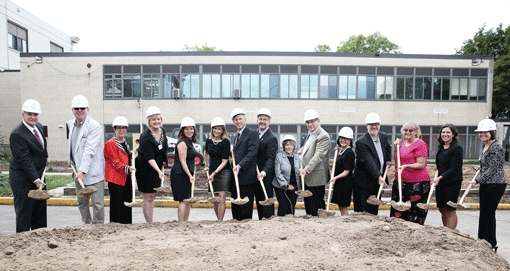
The synagogue at Emerson Avenue and 24th Street in south Minneapolis launched an ambitious physical expansion, with a Sept. 8 groundbreaking ceremony. The main components of what is called the L’Dor Vador Campaign are:
- synagogue renovation, with a new garden courtyard and lobby, and adult classrooms; and a new state-of-the-art, handicapped-accessible Rabbi Max A. Shapiro education building, $21.1 million;
- building endowment “to provide financial sustainability and program excellence,” $2 million;
- infrastructure for facilities planning studies, database system, computer servers and campaign-related staffing and operations, $1.6 million; and
- operating support for the education program during project planning and construction, $900,000.
“The need is clear: we have a 1955 education building, and education in 1955 was very different than education in the 21st century,” Rabbi Zimmerman commented, regarding the construction project underway, during an interview last week in a Temple Israel conference room.
The education you and I (a new Medicare enrollee) experienced as kids, with a small group of children at desks in orderly rows, with a teacher in the front of the class, is “not how we do education in the 21st century,” the rabbi notes.
“We do education though experiential learning, we do it through project-based learning, we do a lot of movement, and these classrooms just are not capable of handling that kind of work,” explained Zimmerman, who came to Temple Israel in 1988, and has been the senior rabbi since 2001.
“What has been happening at Temple is that we’ve grown out of our building, which is a great problem,” continued Zimmerman. “We’re growing larger and we’re growing younger. The majority of our congregation is 49 years old and younger. So we need to change.”
And Zimmerman pointed out that the proposed change in the physical structures entails the correction of misaligned floors between the 1928 synagogue building and the 1955 education building. Further, the renovations must adhere to the accessible design standards set by the federal Americans with Disabilities Act (ADA).
“There are stairs everywhere, connecting the 1928 building to the 1955 building,” said Zimmerman. “There are stairs coming out of the middle of the halls in crazy ways.”
The renovated buildings will be easier to navigate for those with mobility issues, and parents with children in strollers.
“We’re creating larger, flexible classrooms, we’re creating a more welcoming education office that greets; but equalizing the floors is a very important part of it,” the rabbi remarked.
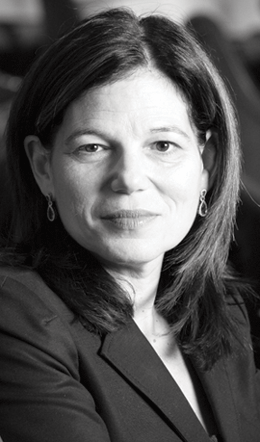
The new construction also features a one-story early childhood center addition. In the current configuration, the pre-K children are situated on the second floor of the education building, and navigating a lot of steps, as Zimmerman noted, is not ideal for the young children with short legs.
She also mentioned that the one-story education building addition will be “green roof ready” — the structure will be fortified to support a rooftop garden.
In an interesting sidelight, the early education center has been moved to the old Adath Jeshurun synagogue, at 34th Street and Dupont Avenue, during the construction period that will stretch to September 2016. The shul is now a Unitarian church.
Another major component of the renovation is the creation of an expanded entryway and lobby surrounding a garden courtyard. Rabbi Zimmerman showed me a scale model of the building (created by a computer printer), and manipulated the new pieces: the education building addition, the courtyard and the lobby entrance.
The fundraising campaign “has been doing very well — we’re 86 percent toward our goal,” according to Zimmerman, who added that, in addition to raising $25.6 million, another goal is 100 percent participation by members of the congregation, which represents 6,000 people.
The L’Dor Vador (From Generation to Generation) Campaign is chaired by Cindy and Joel Shapiro. The honorary co-chairs are Eloise and Elliot Kaplan, and Marjorie and Irving Weiser.
While there has been a migration of Jews from the cities to the suburbs, and some shuls have relocated in the burbs, Temple Israel (whose early rabbi, Dr. Samuel N. Deinard, was the original publisher of this paper) has always been located in Minneapolis.
“Temple Israel stayed in the city and we are an institution in the city,” said Zimmerman. “Our health is the health of the city, the city’s health is our health. So we are very involved in the city. I like to say, our address is our mission and vision.”
She allowed that there have been discussions in the past about moving Temple Israel to the west, but “thank goodness, everyone was resolved to stay here. We need a Jewish voice in the city, it’s really important. I’m at the table often as the only Jewish voice.”
Temple Israel has set an Oct. 4 L’Dor Vador Celebration and Campaign Launch. Following the Simchat Torah service in the sanctuary, there will be an outdoor picnic and festivities. Children and families will fill more bottles with dirt to take home, and then return with them next Rosh Hashana for the tree planting.
(American Jewish World, 9.25.15)

